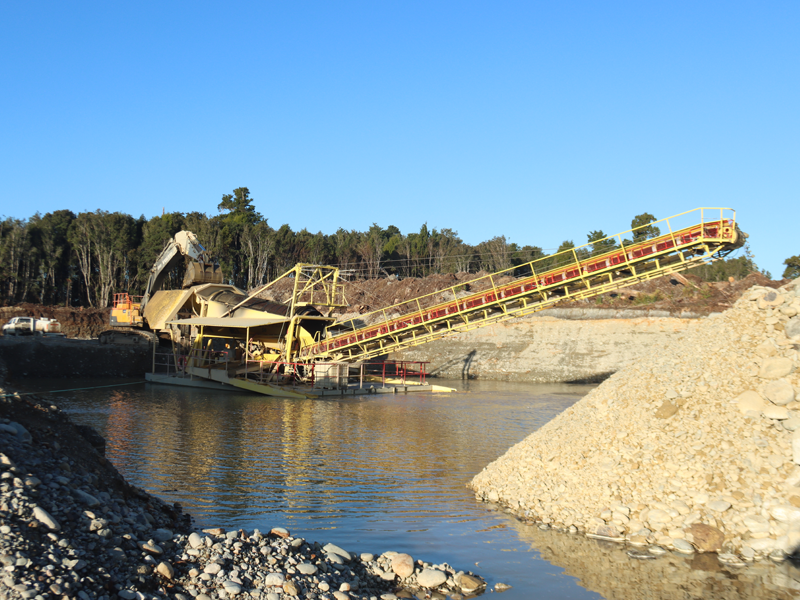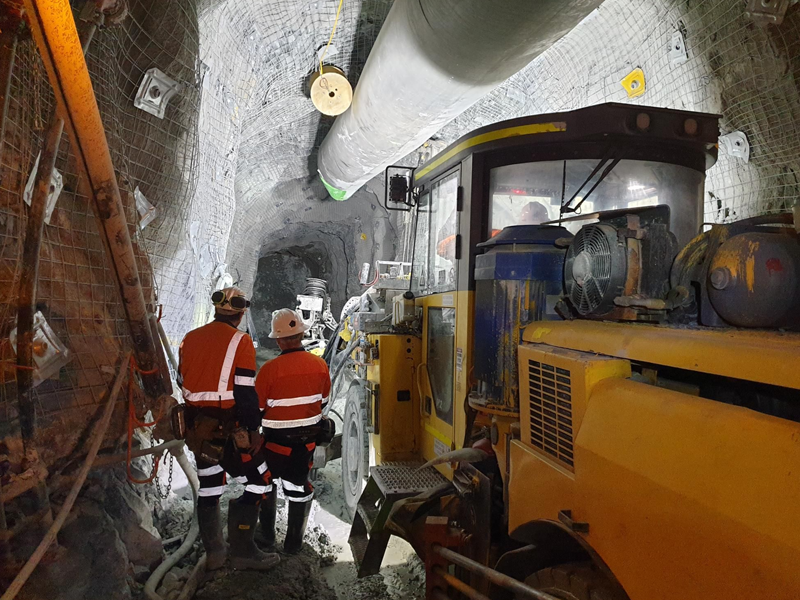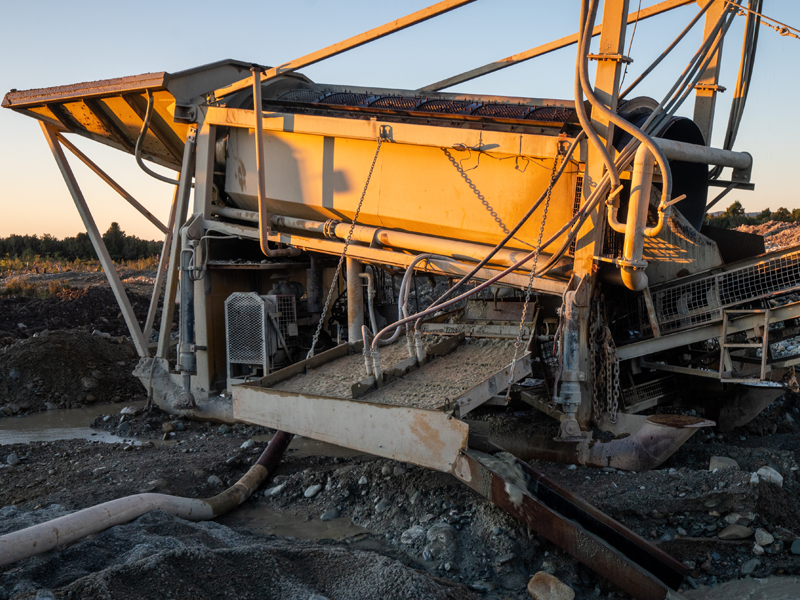How do people mine on the West Coast?
When people mine, they go about recovering minerals from their natural state at surface level or from beneath the earth (including recovering minerals found in river and creek beds), and then refining and processing them to a standard agreeable to the end user – be it the person mining the resource, or most likely, an end customer or user.
In the case of the West Coast, mining began with the discovery of pounamu or greenstone some time about the 13th or 14th Century following the arrival of early Māori.
After five centuries of Māori mining, carving, and trading pounamu, subsequent mineral development occurred as Pākehā began arriving to New Zealand in larger numbers following the signing of the Treaty of Waitangi in February 1840.

Mining of gold and coal (the two historic and modern mainstays of the region’s mining industry) began in 1864 and have continued up to the present day.
While mining methods vary on the basis of what mineral people extracting, the basic principle remains the same – getting it out of the ground. This is true whether the resource in question is gold, coal, pounamu, aggregate, garnet, etc.
The method by which this is achieved will, in basic terms, be either “open cast” mining, or “underground” mining.

Recovering minerals from beneath the ground was historically achieved largely by underground mining. Through this method, miners established tunnels at ground level, and drove them into the earth with pick and shovel, and also with explosives to access a resource deposit. Where necessary, miners would put in wooden supports to prevent their tunnels and shafts from collapsing on them. It was very hard physical work to secure whatever payable resource was being pursued.
Once a quartz vein containing gold or a coal seam was reached, miners would then transport the ore they had won out of the tunnel, sometimes on human-powered narrow gauge rail, for further processing.
Underground mining is much less common today, as increasing mechanisation has made open cast mining (see below) the more cost-effective method for recovery of minerals in many instances.
There are currently no producing underground mines on the West Coast, although several are being considered or are under development, including Federation Mining’s Snowy River project, which will access the historically mined “Birthday Reef” beneath Waiuta. The company has driven twin 3 kilometre-long tunnels up to the original quartz reef of the old timers and plans to pour the first bar of gold by 2024.

Rather than tunnelling into the earth to reach a resource, open cast mining works by simply removing the overburden (the layers of earth and unwanted rock above the desired resource) and storing it elsewhere until the desired resource – an ore body or a coal seam – is exposed.
In some instances, a resource may be quite shallow; in others it may be at depths requiring the digging and excavation of substantial pits.
Whether a resource is best recovered by open cast or by underground mining methods will depend on many factors, on a case-by-case basis, as every mine is different.
Some mines may start as opencast operations, and then later evolve into underground operations as they move deeper into the earth to follow a seam or quartz vein. A point is reached where the amount of excavation necessary for opencast mining becomes uneconomic.

What is involved or required in processing the raw material extracted from the ground depends on the resource. A brief description of these processes is outlined below.

For coal, which is mined in seams or layers in various thicknesses, miners will put the “run-of-mine” product through some form of crusher to meet customers’ size specifications. In some instances, they may pass the coal through a wash plant to remove any dirt or dust from the coal that would cause issues when burnt – put simply, coal’s inflammable, and dirt isn’t.
Again, with the customer’s needs in mind, producers of coal will blend coal from different deposits to manage the content of impurities, such as ash (non-coal minerals) and sulphur, or the properties of the coal for optimum burning a boiler or furnace. Blending is an important value-add to bringing coal to market.

When it comes to gold, the mining method depends greatly on the type of gold deposit. In the case of hard-rock gold, in which nuggets or more commonly flakes of gold are found trapped in veins of quartz that form in cracks in surrounding rock over geological time, the ore takes the form of pieces of quartz which miners must break down to recover the gold inside.
Whether this quartz is mined via open cast or underground methods, once recovered the miner will transport the material to a crushing plant or mill for processing with some combination of water, gravity, chemicals, sometimes electrolysis, in an effort to finally produce gold in a pure form, often melted into bars.

For gold found in alluvial deposits, its surrounding quartz or rock has already been crushed, weathered and eroded, freeing the grains and flakes to the action of water, always moving the gold down current, and winnowing the lighter rocks and sand from the heavier minerals. Alluvial deposits of gold are gold-rich layers or strata that occur sporadically the outwash of mountains worn down by rain, glaciers, and time.
These gravels, and in some instances even sands, bear loose nuggets and flakes of gold, found today in riverbeds, riverbanks, beaches, and buried by subsequent layers of erosion.
Alluvial gold mining requires the removal of overburden, and then the processing of gold-bearing alluvial deposits.
Once exposed by machinery such as diggers and bulldozers, miners process the material through a gold screen, which will either float on a pond of water or be land based.
These screens come in different shapes and sizes but operate on the same basic principles of using water and gravity to further concentrate the gold (much in the same way as the processes that have brought them down from the mountains) to be further processed to separate out other heavy minerals such as ironsands before being melted down as pure gold.

The same process occurs at a smaller scale when people in diving gear use suction dredges to mine gold-bearing gravels from riverbeds, or when mining gold-bearing black sand, or heavy mineral-rich sand. on some West Coast beaches.
Heavy mineral concentrates on the West Coast, which may contain garnets, ilmenite, and minerals such as monazite (which can hold rare earth elements) are also found on the West Coast as alluvial deposits – they are a type of black sand. While untapped to date, these resources will be processed by similar principles and methods as for alluvial gold, namely, a plant using water and gravity to concentrate the desired minerals.

Quarrying is the name given to the extraction of aggregates (gravel, stone, rock) and industrial minerals, such as limestone, and is a subset of mining. Quarried materials are recovered either at ground level or via open-cast methods, which remove overburden to expose the resource.
Recovered gravel, rock and larger boulders may be processed through screens to ensure the size of sold product meets customer requirements. Operators may put some rock through a circuit of crushers and screens for the same purpose, and to create in a single process a range of size fractions for different uses, for example, for building roads or making concrete. Larger boulders find a use in structures such as flood protection or coastal breakwaters.
